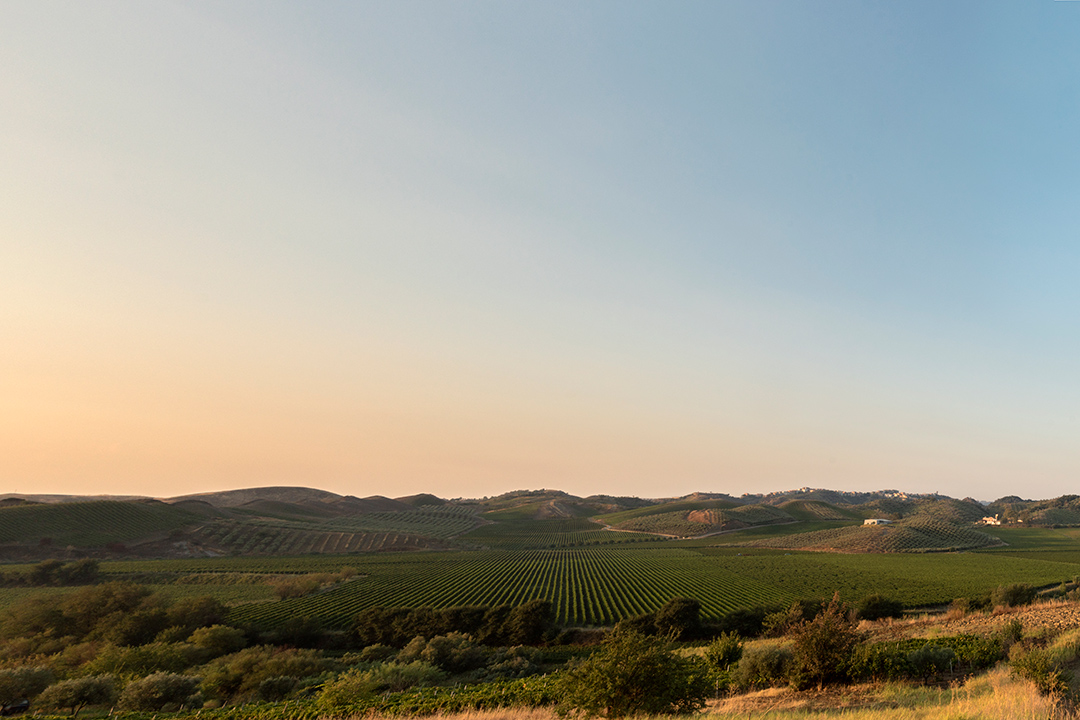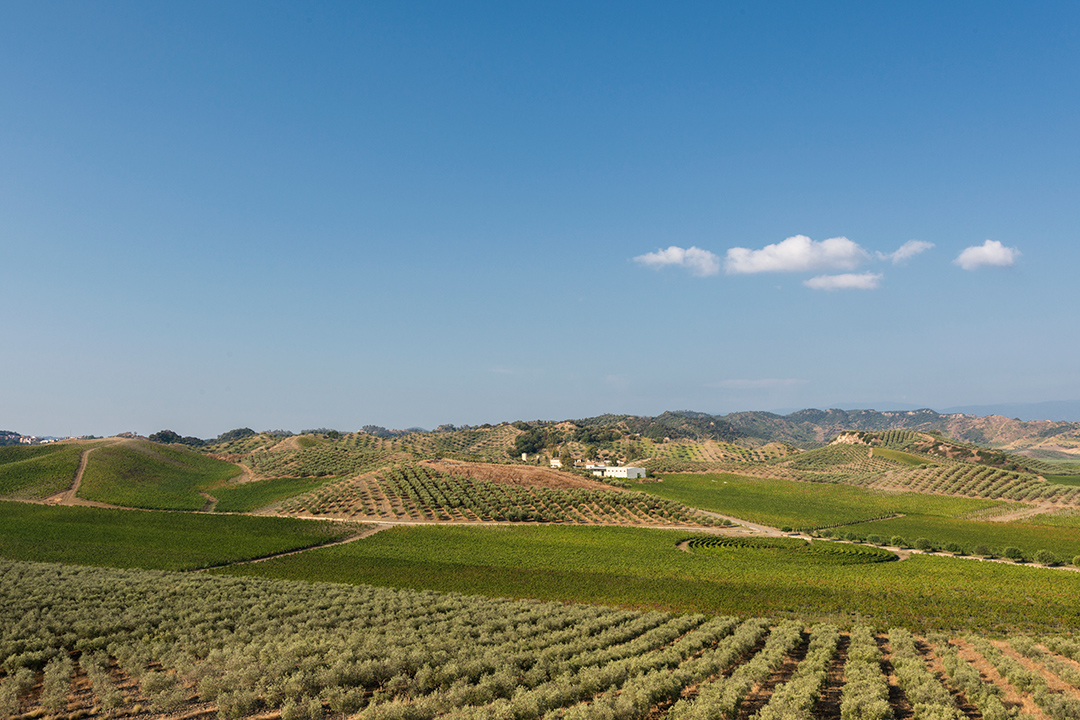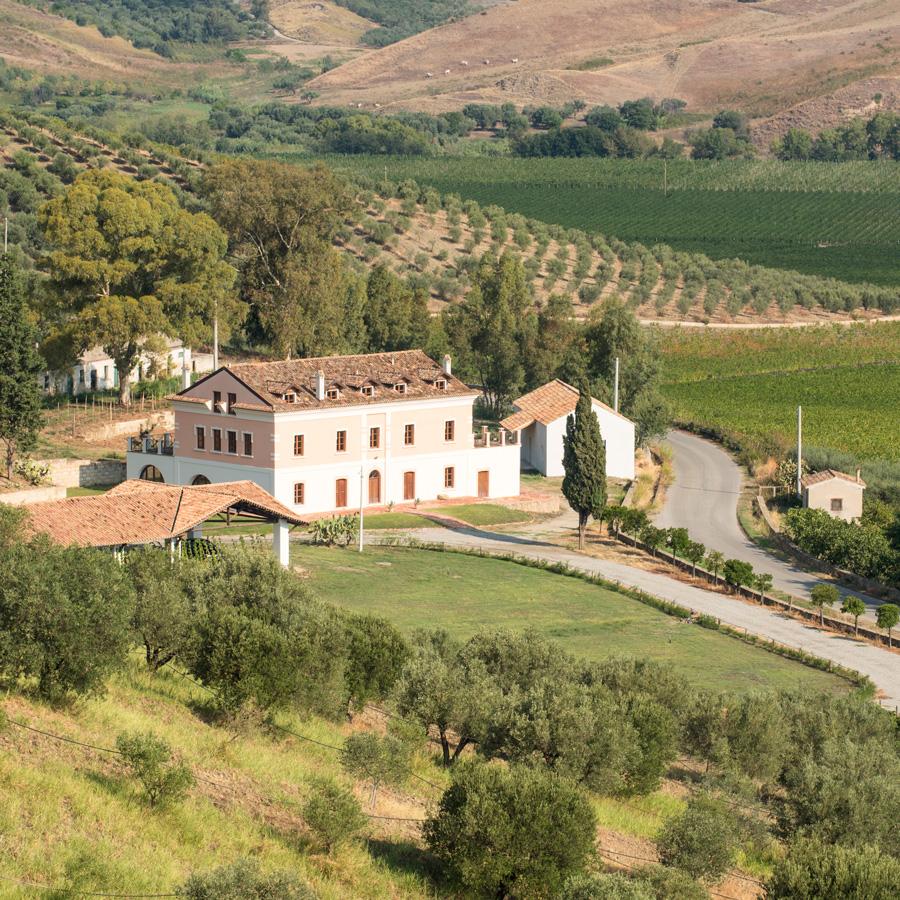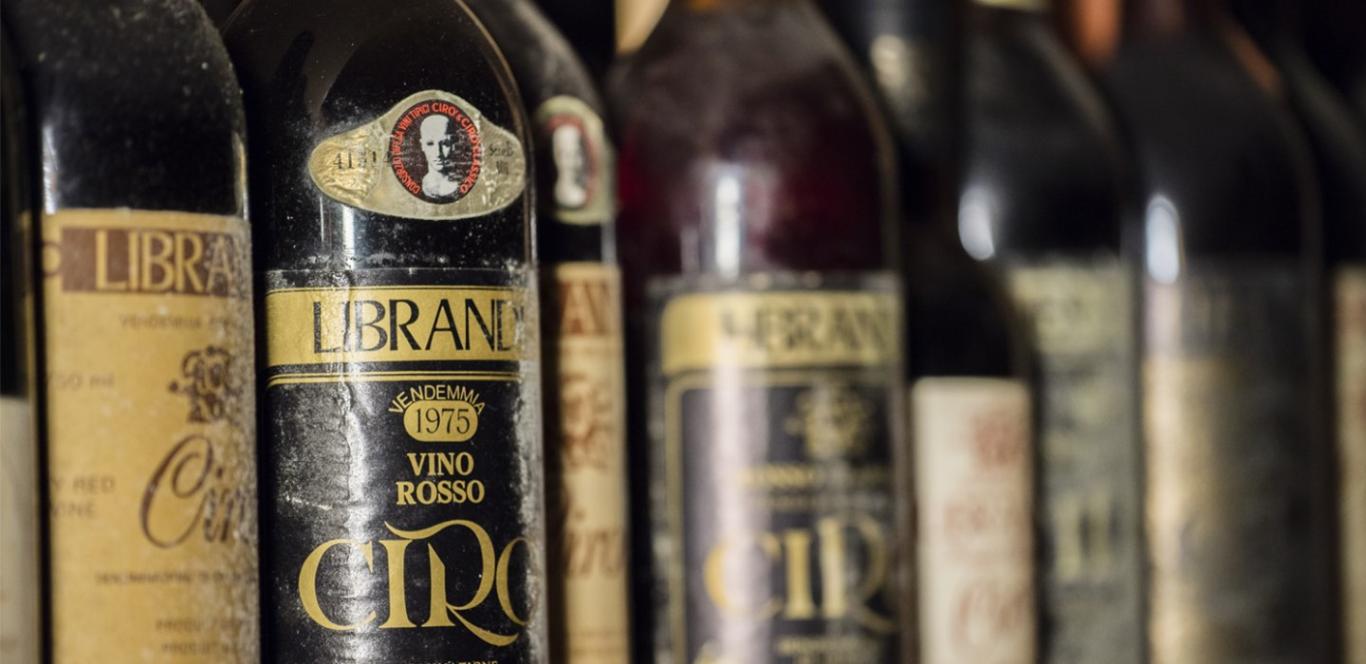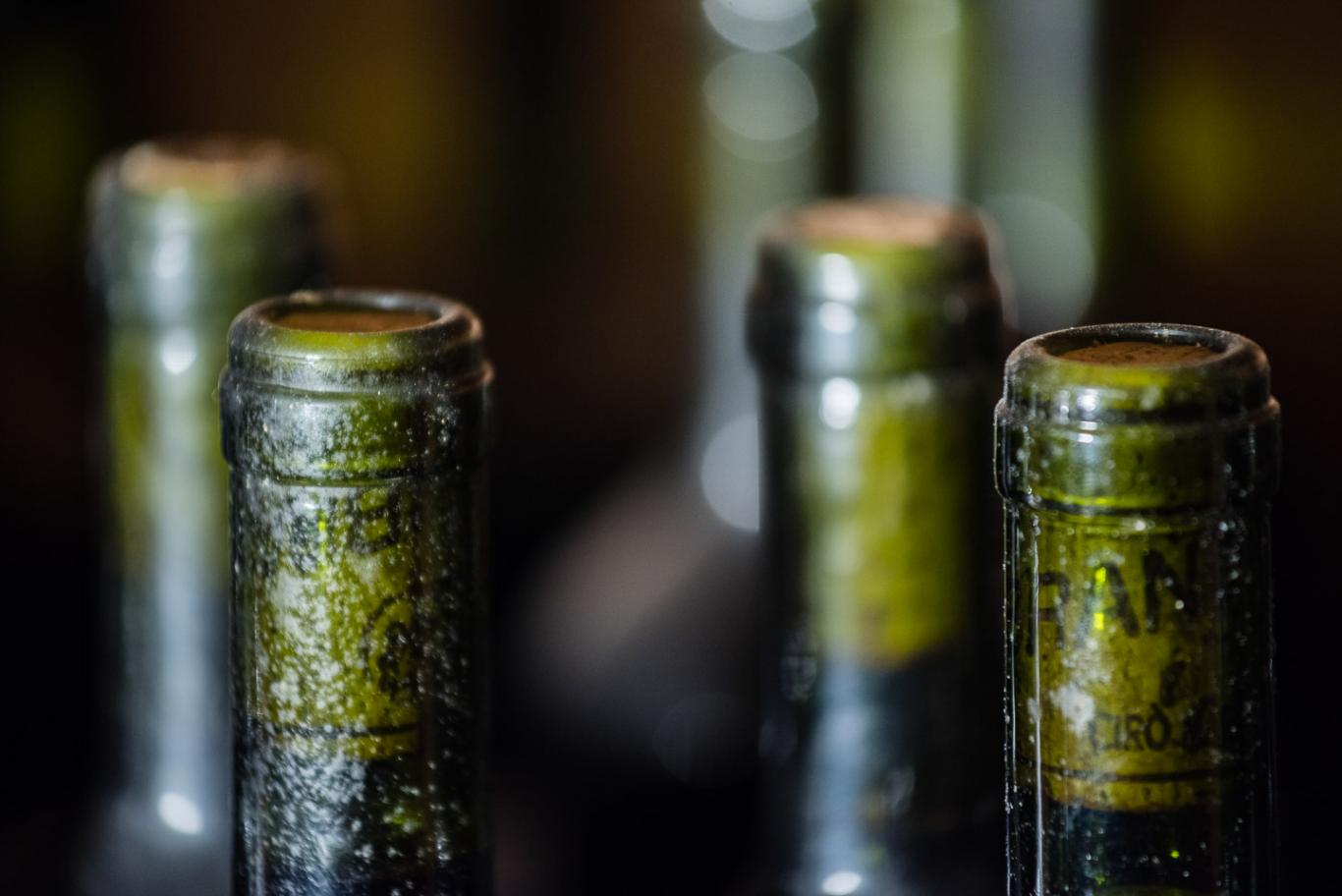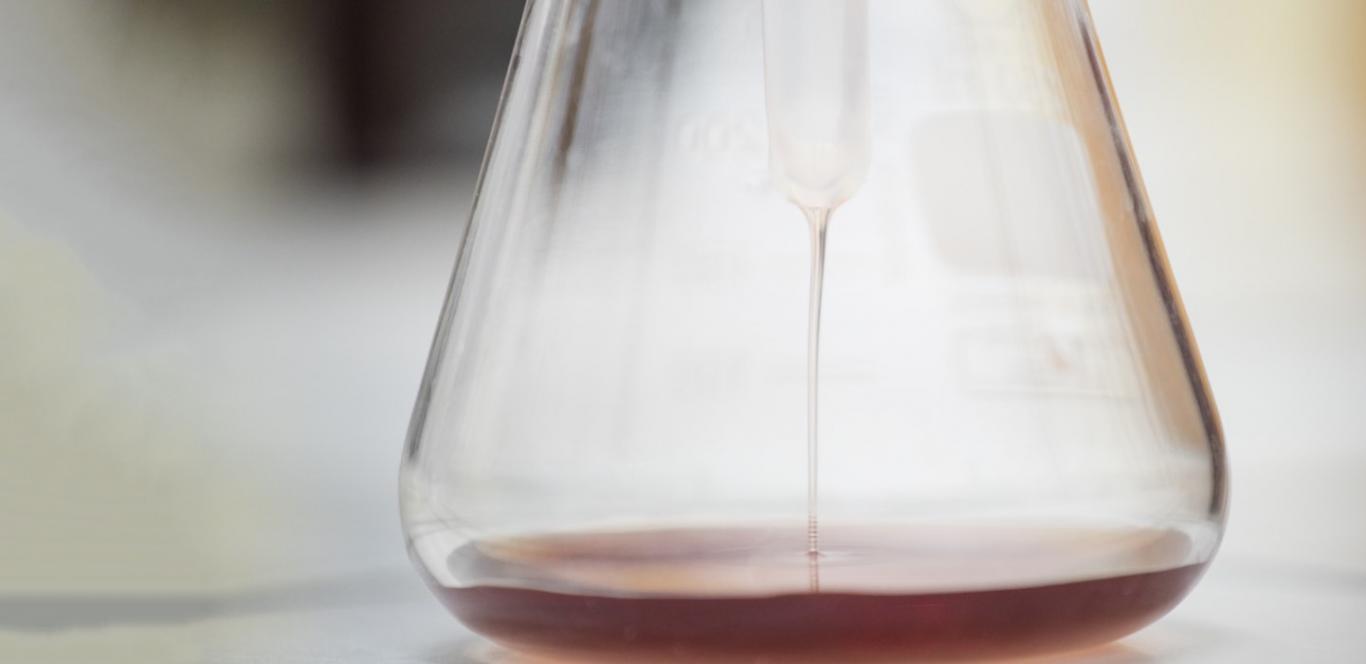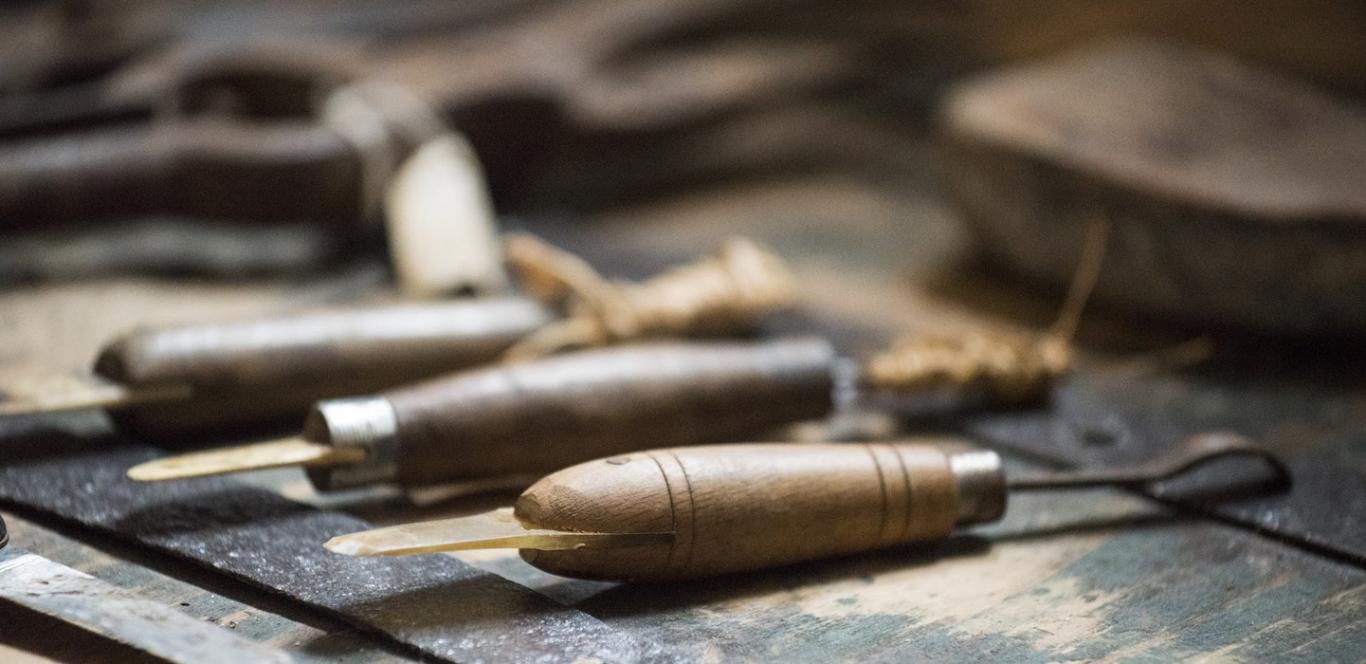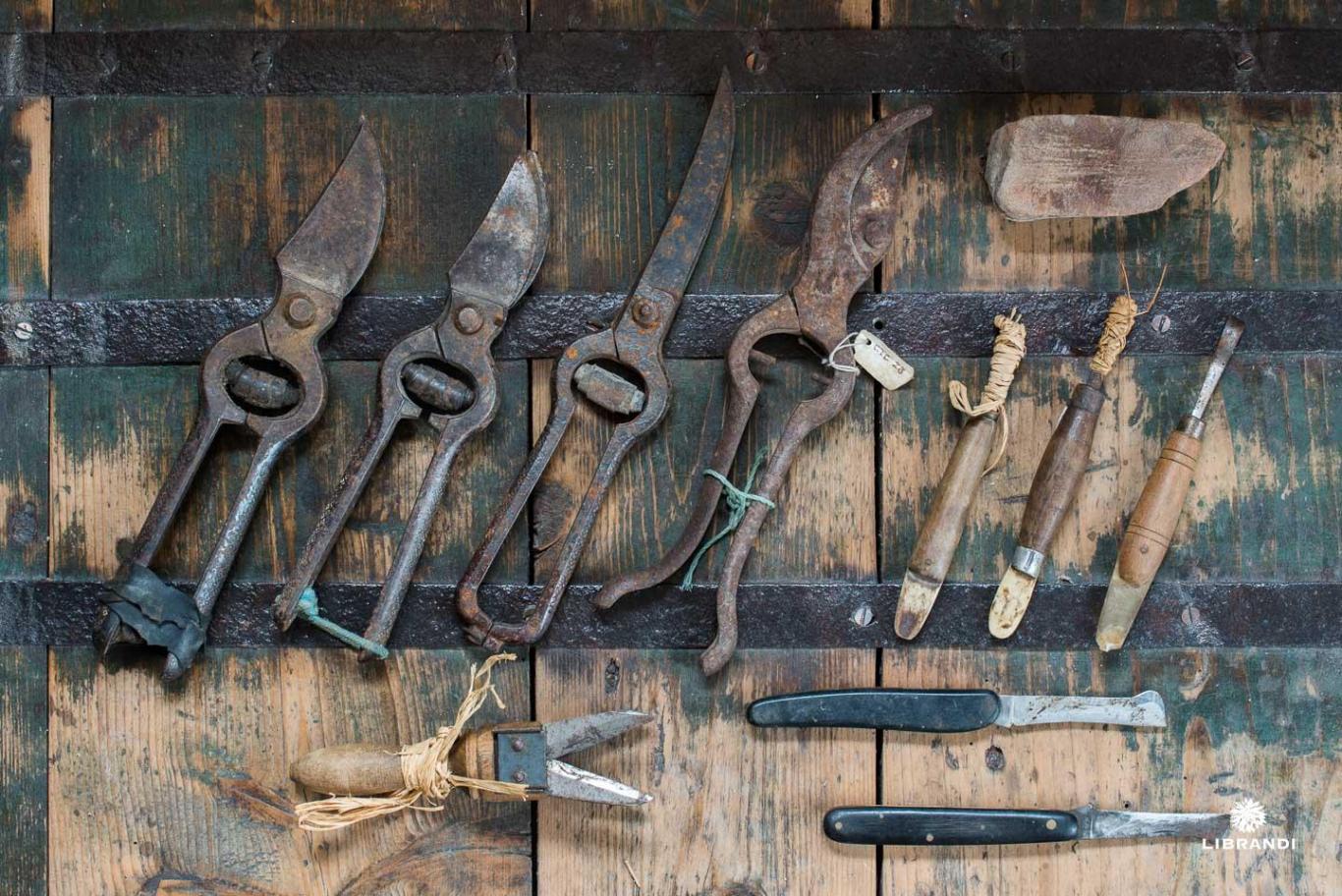Estate
All of the grape varieties we use can be found in the approximately 155-hectare Rosaneti vineyard. The estate is indeed fragmented into countless smaller plots, clearly defined in terms of both soil and microclimate. The scope ranges from cooler areas with looser soil, ideal for varieties such as Sauvignon Blanc, to warm and exposed clay hills, perfect for Magliocco. All of our 80 hectares of olive groves can also be found here. The remaining land consists of Mediterranean scrub and oak woods. It is a must-see when visiting our company. Driving all the way to the top of the Rosaneti hills, you can enjoy a perfect view and take in Calabria's beauty: from the same point you can see both the beautiful Ionian Sea and the majestic Sila mountains with their often snow-capped peaks. In between, countless beautiful villages clinging to the hilltops.
